Page Five: On Our Way To The Grand Canyon
We had several hours before the train departed (1:30) so we drove around the local area.

Great stainless steel cars were built in the 1950's

Built in 1908
Grand Canyon Railway departs each day from the historic Williams Depot. The depot was built in 1908 by the Atchison, Topeka and Santa Fe Railroad. The depot was an oasis for travelers heading to and from California along the main line running from Los Angeles to Chicago. The depot was much more than a place to get tickets. It was home to a Harvey House Hotel, which had 43 rooms. There was also a formal dining room as well as a cafe, bar and a news room. The depot is the oldest poured-concrete structure in the state of Arizona. Today, the depot is where passengers of Grand Canyon Railway pick up their tickets. There is also an expansive gift shop in the depot full of Grand Canyon Railway and Grand Canyon mementos. Both the Williams Depot and original Fray Marcos Hotel are listed on the National Register of Historic Places.

Off we go across the plains to the Grand Canyon
Of all that may pull you to the splendor of the Grand Canyon, nothing is more powerful than Grand Canyon Railway's fleet of vintage locomotives. As the mighty giant pulls you closer, you're more than content to watch a remarkable world go by as you tour the country side from the comforts of your classic train car. Out your window, watch as the terrain changes from high desert to prairie, prairie to pine. It's a view that's ever-changing until you come across a view that changes so dramatically, it could very well change you. Welcome to the Grand Canyon.
We Toured The Town Before We Got On The Train

Oh oh! Rainbows told us of rain about to come our way!
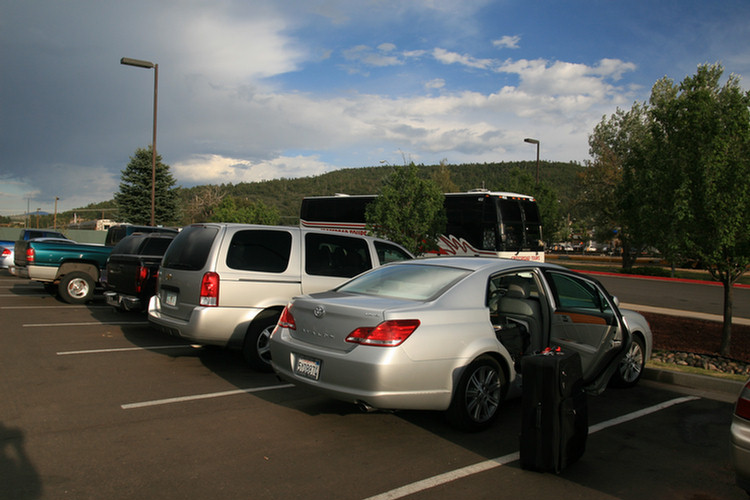
The "Silver Bullet" was ready to go!
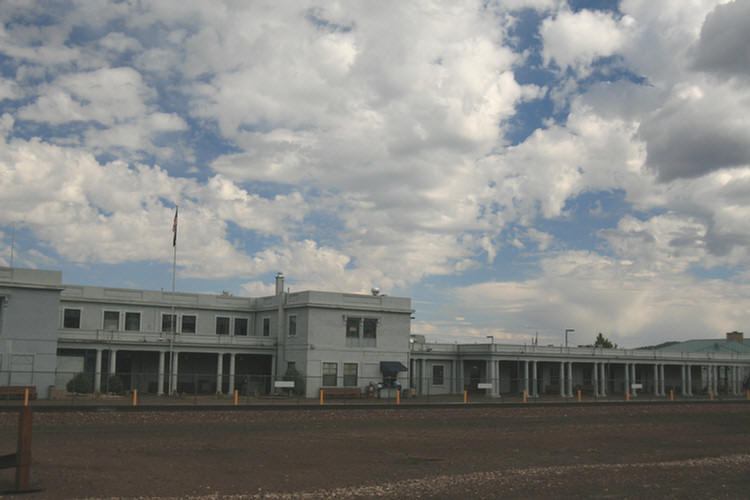
The railroad depot is over 100 years old!
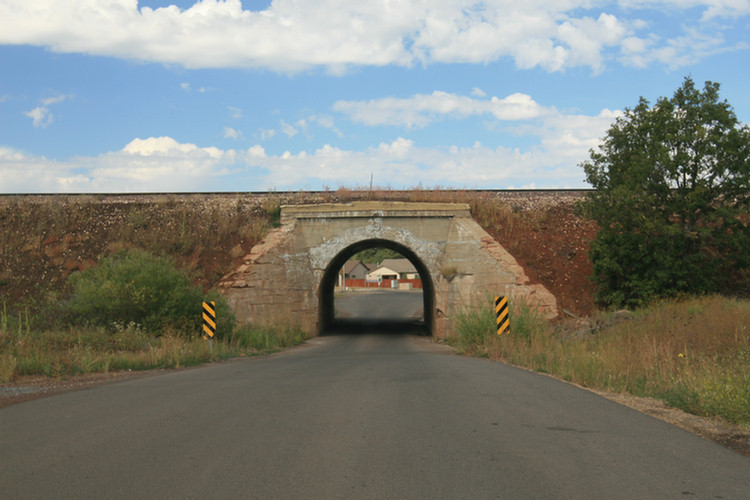
We had to see the golf course
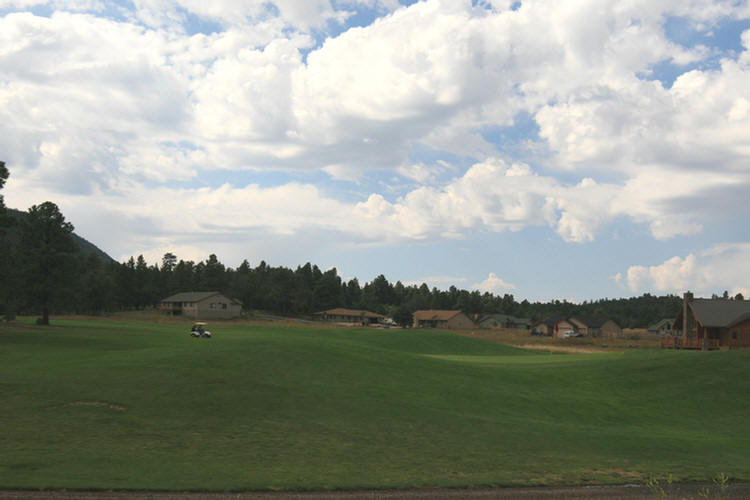
Wow!
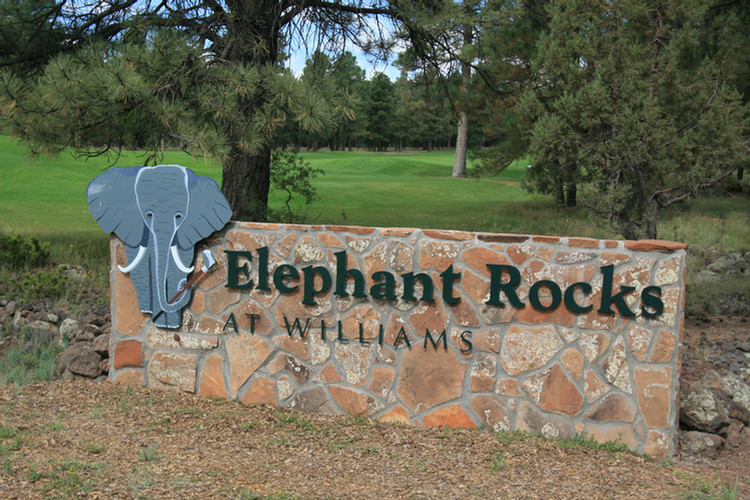
Elephant Rocks was a very pretty course... Usable 8 months a year!
In the shadow of Bill Williams Mountain, Elephant Rocks at Williams is the perfect escape from the summer heat of the Valley. Nestled at 7000 feet above sea level, the course meanders its way through stands of large Ponderosa pines. There has been a course here since the 1920's but it was not until 1990, when the course was reconfigured by Gary Panks, that its reputation grew.
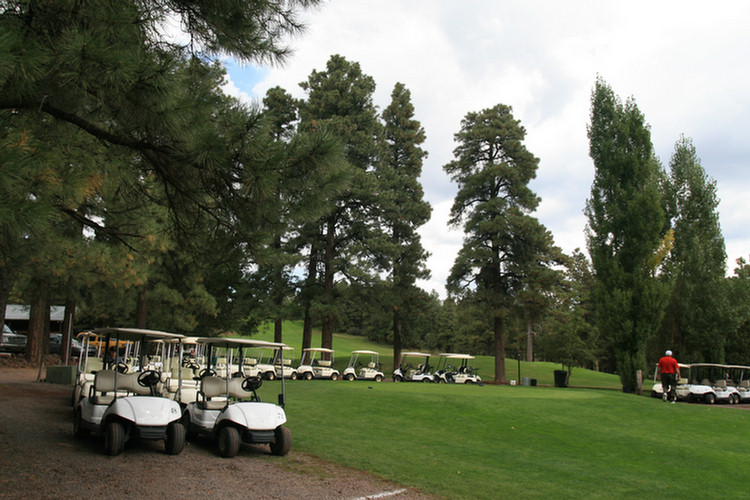
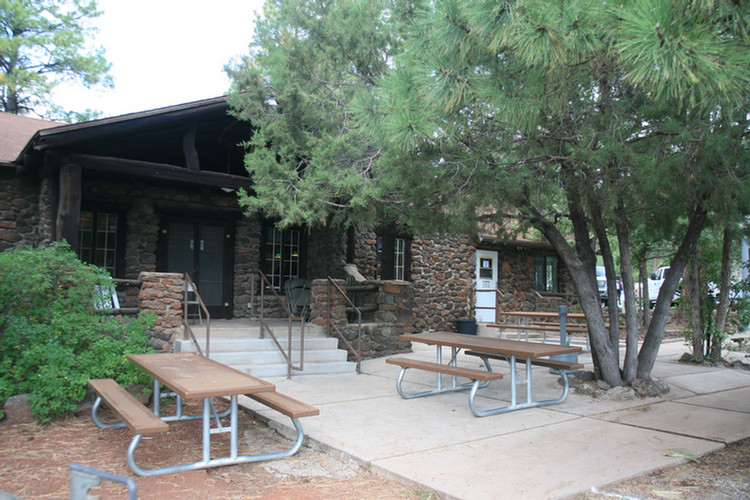


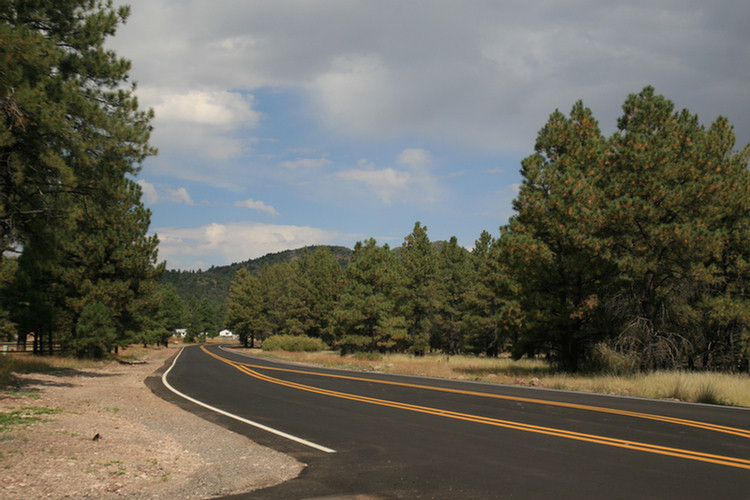

Back Into Town
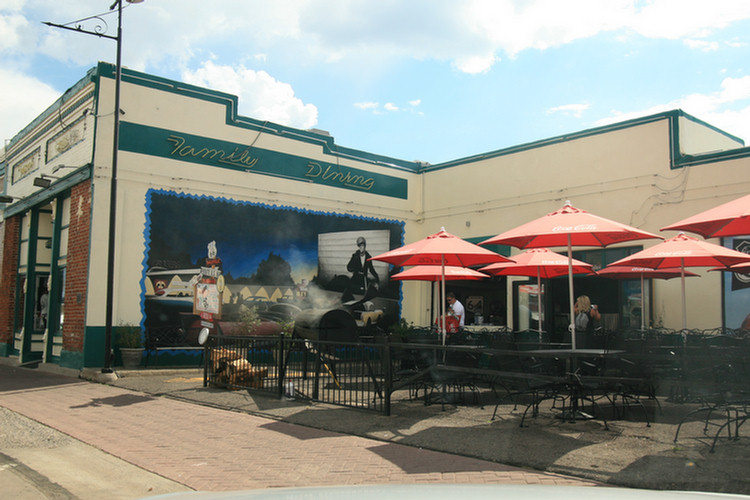
The bar-b-que was going full blast and smelled fantastic
Museum's Are a Must



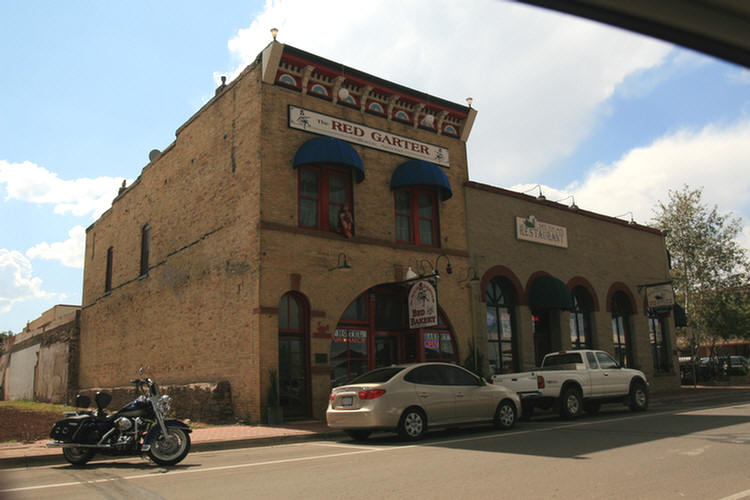
Check the lady hanging out the window on the second floor!

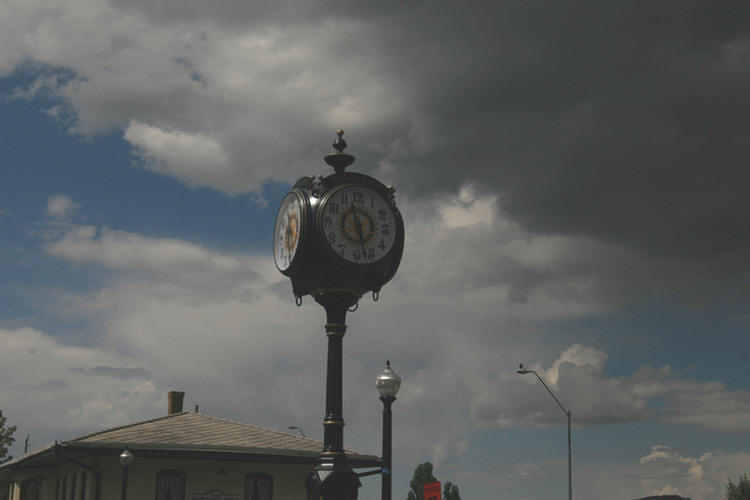
Time for a bite to eat and get ready for the ride into the past
Time For A Bite Before Getting On The Train

They had Pi... You know, pie pronounced properly is "pi"
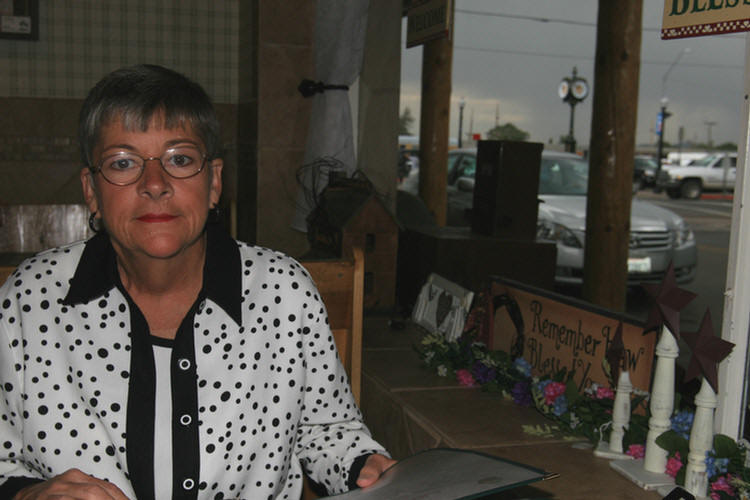
The "Silver Bullet" awaits outside in the rain!
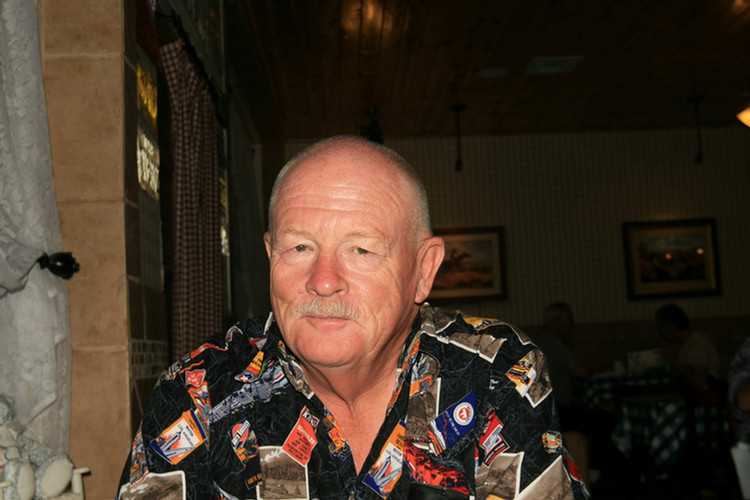
Boarding The Train In The Rain

Yes, it was raining!
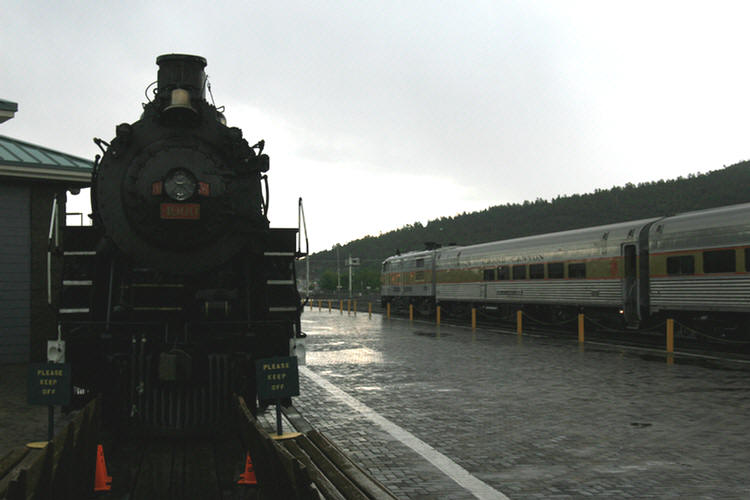
Dark clouds made for a dreary departure
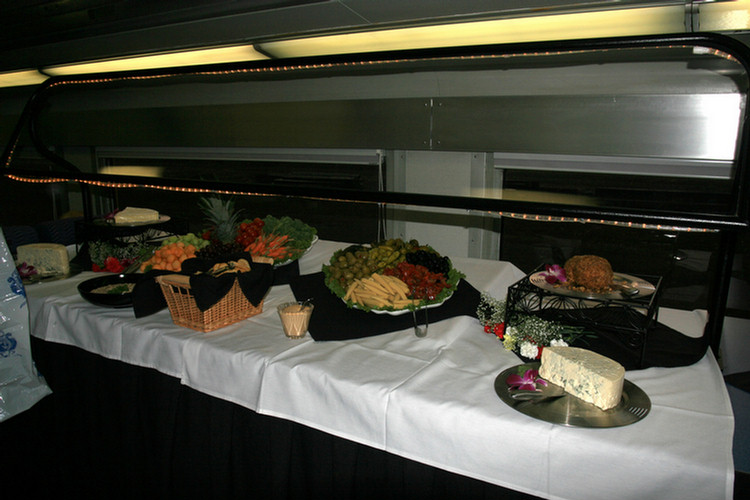
But food was plentiful!
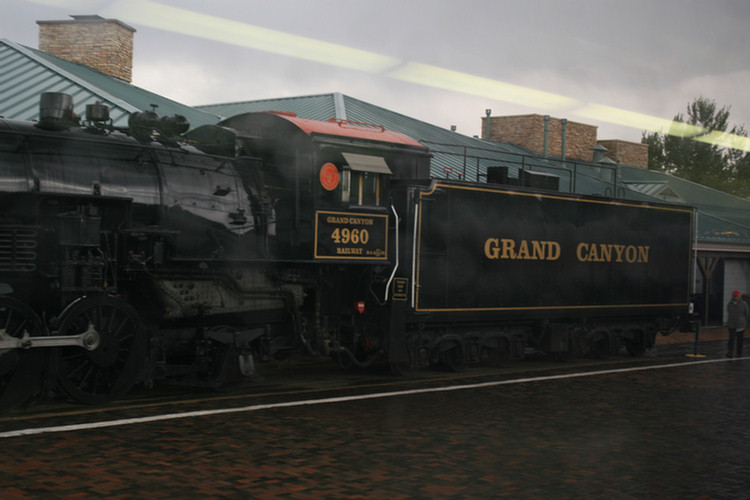
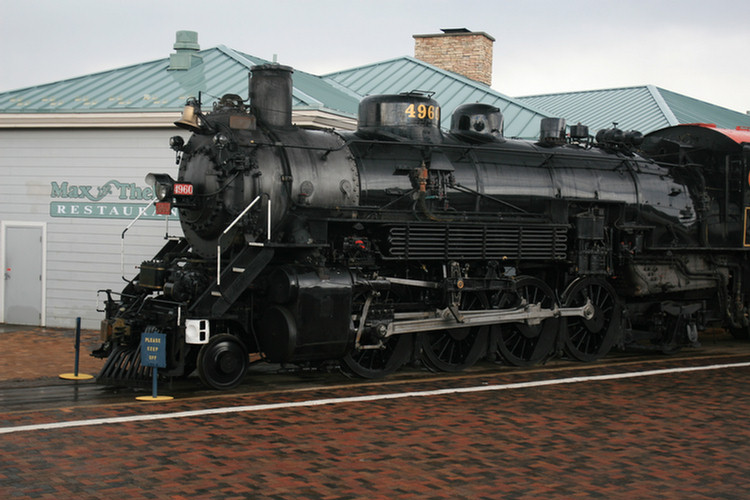
The Bartender Kept The Train A Pleasure... His iPod Was Filled With Great Music!

Great bartender
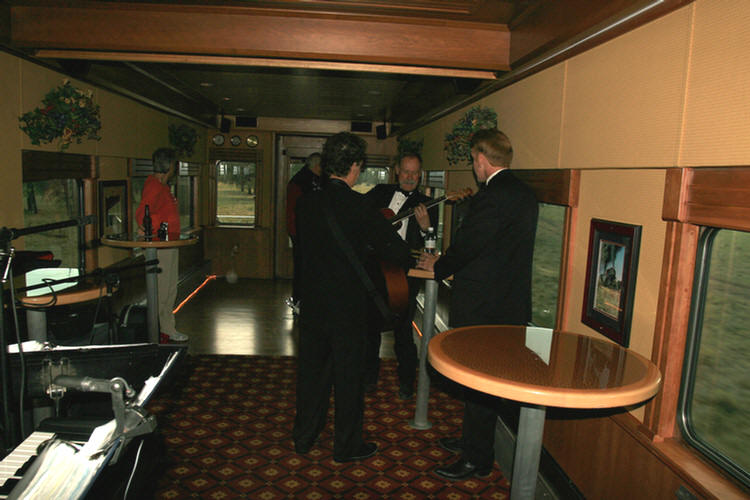
The trio was warming up
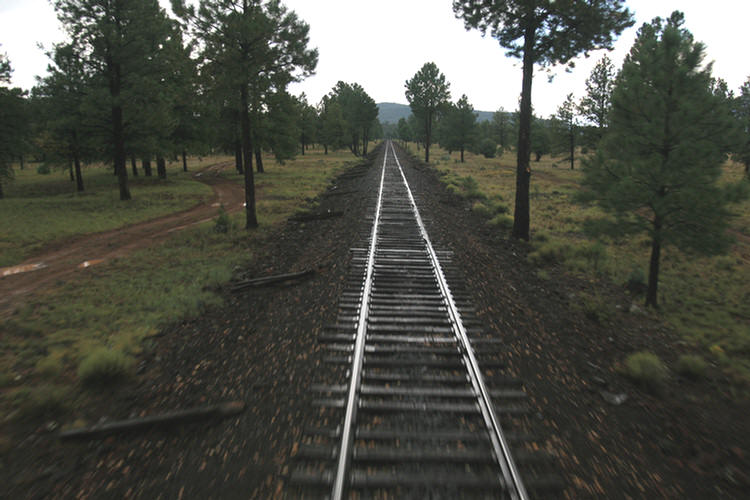
Looking out the back!

The curves made dancing a challenge!


Brake pressure, speed, and train time!

Yes.... One did have to hold on to something when the train was moving!
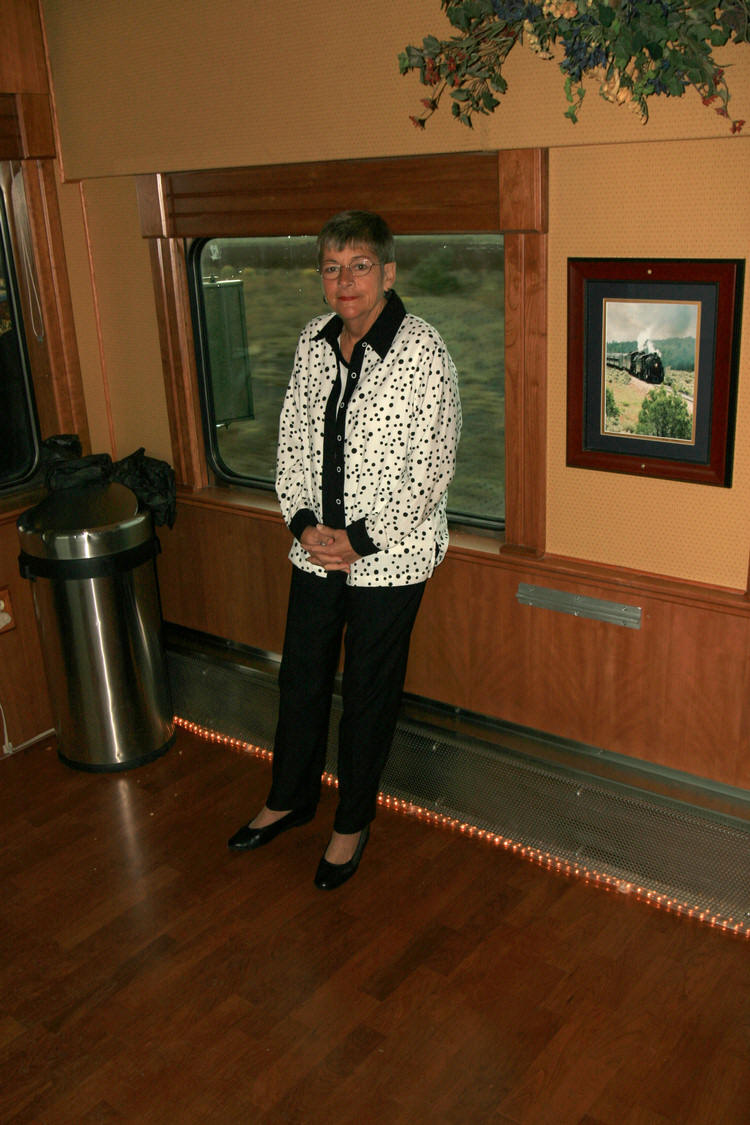
"Look Ma, no hands!"
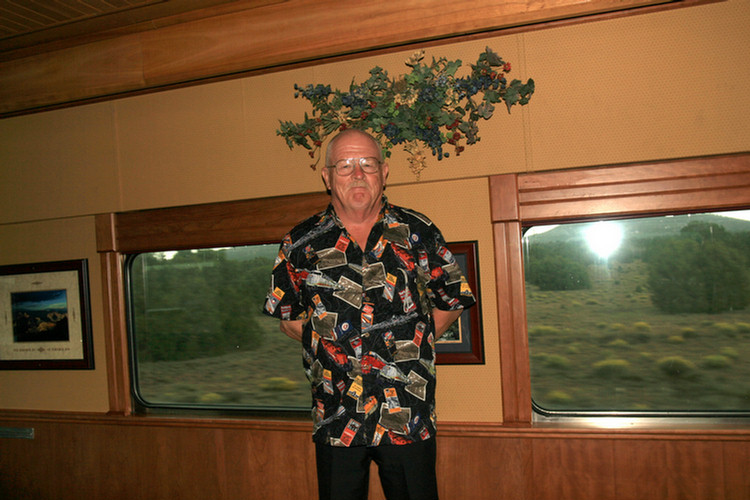
With his retirement train shirt!
We Paralleled The Highway For a While
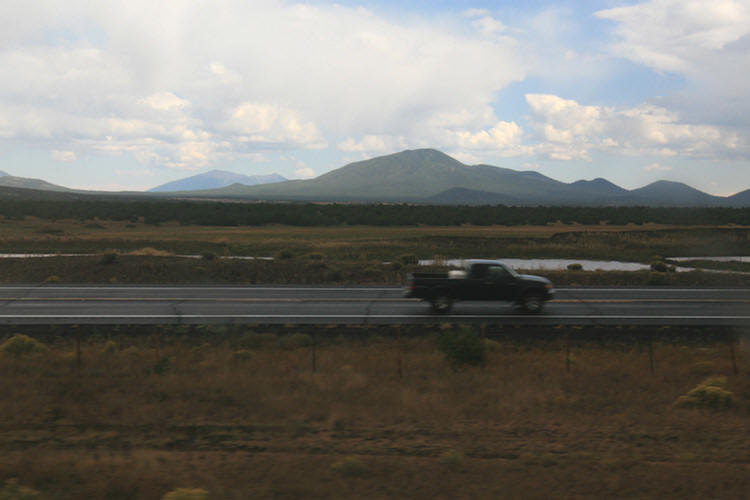
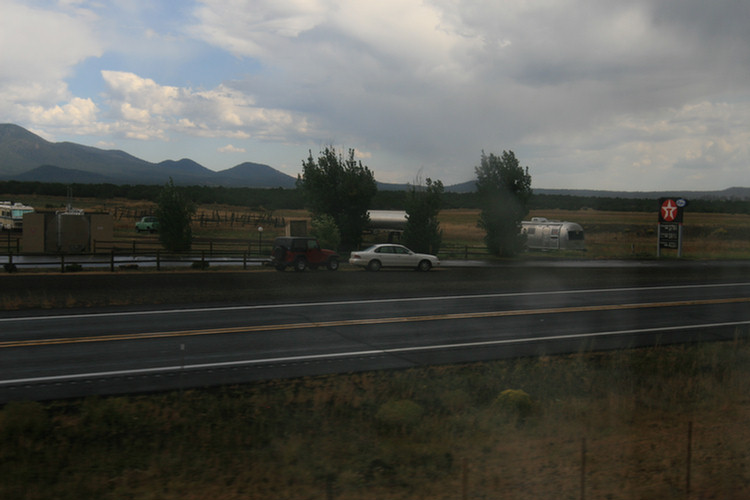

We saw the deer and antelope playing! No, really!
The Conductor Was Conducting
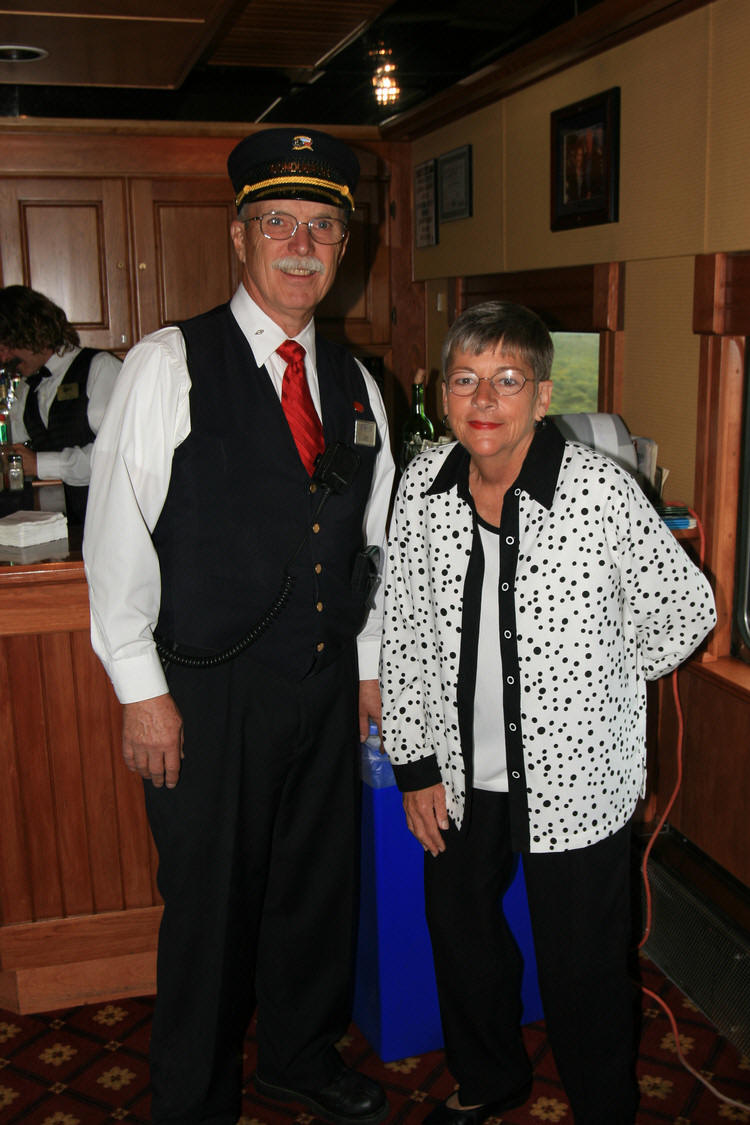
He actually is a busy man!
Did You Know? -
The 'Conductor' is the railway employee charged with the management of
a freight, passenger, or various other types of train, and is also the direct
supervisor of the train's "Train Crew" (brakeman, flagman, ticket collector,
assistant conductor, on board service personnel). All train crew members
on board the train work under his or her direction. The Conductor and Engineer,
who is in charge of the locomotive(s) and any additional members of the
"Engine Crew" (fireman, pilot engineer) share responsibility for the safe
and efficient operation of the train and for the proper application of the
railways' rules and procedures. On some railroads, Conductors are required
to progress to the position of Engineer as part of union contractual agreements.
Conductors usually have the following responsibilities:-
* Jointly coordinating with the engineer and dispatcher the train's movement
authority, and verifying this authority is not exceeded.
* Communicating and coordinating with other parties concerned with the operation
of the train: yardmasters, trainmasters, dispatchers, on board service personnel,
etc.
* Being alert to wayside signals, position of switches, and other conditions
affecting the safe movement of the train.
* Mechanical inspection of the rolling stock.
* Assisting the Engineer in testing the air brakes on the train.
* Signaling the Engineer when to start moving and when and where to stop.
* Keeping a record or log of the journey.
* Checking the tickets and collecting fares on passenger trains.
* Attending to the needs of passengers.
* On a freight train, keeping the record of the consignment notes and waybills.
* Directing, coordinating, and usually manually performing, the shunting
or switching the train needs to perform.
Passenger trains may employ one or more assistant conductors, who assist
the conductor and engineer in the safe and prompt movement of the train,
to share the workload, and accept delegated responsibility
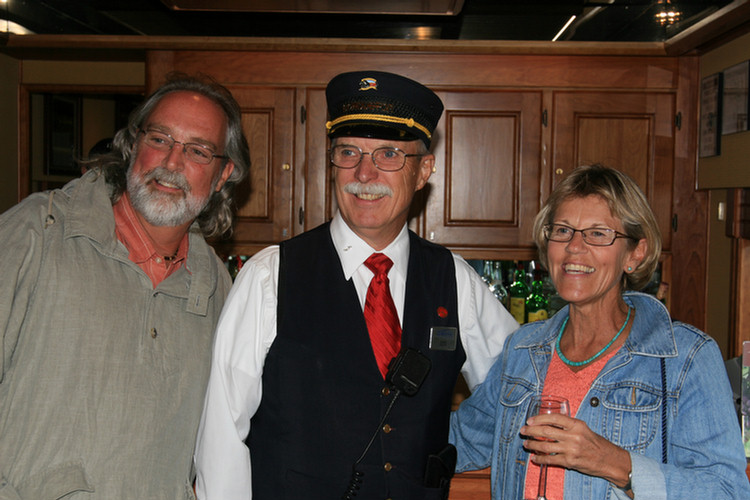

The tanker was for watering the livestock!
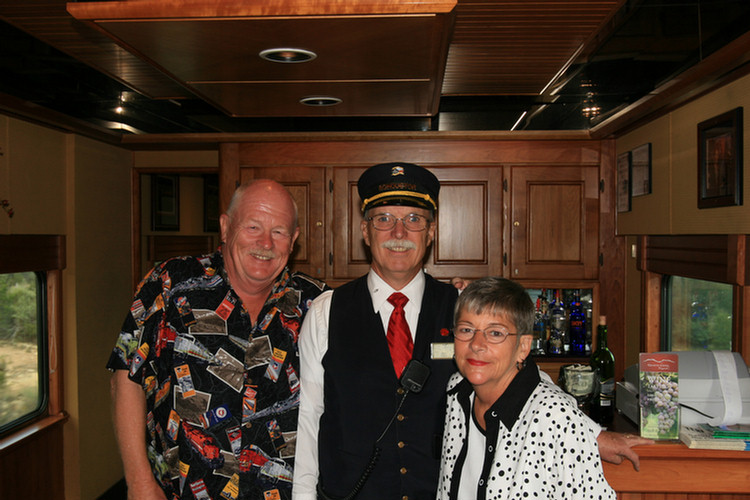
Paul, The Conductor (Tom Hanks), and Sue
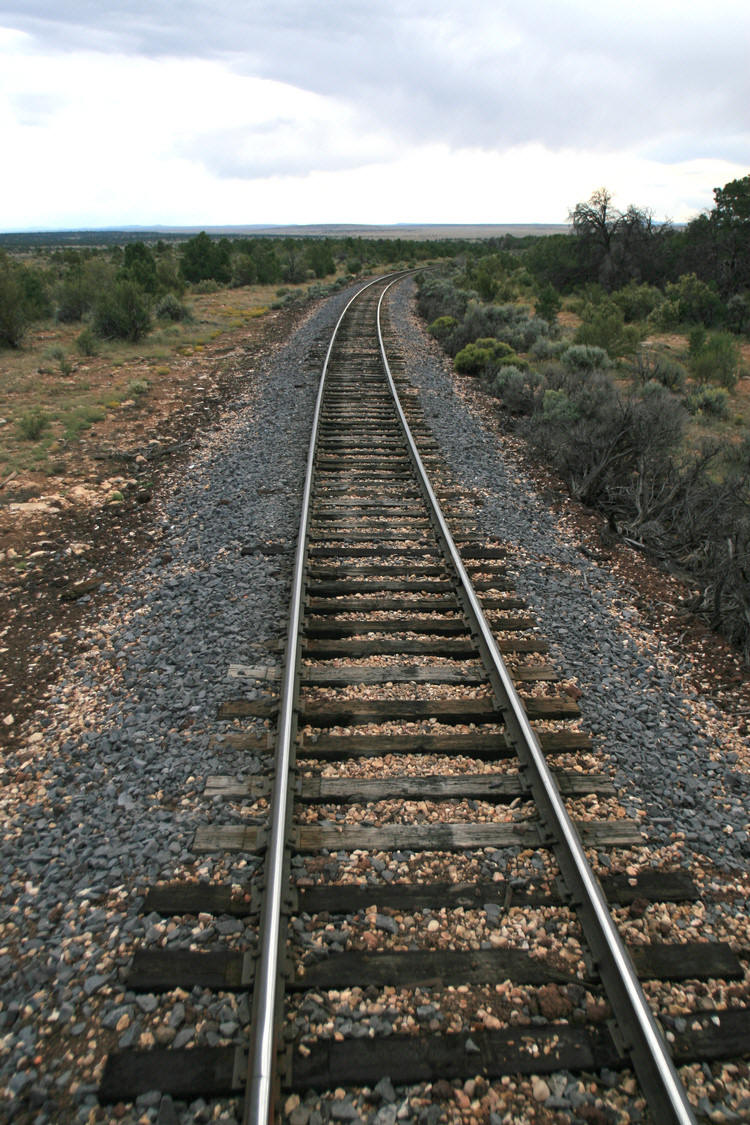
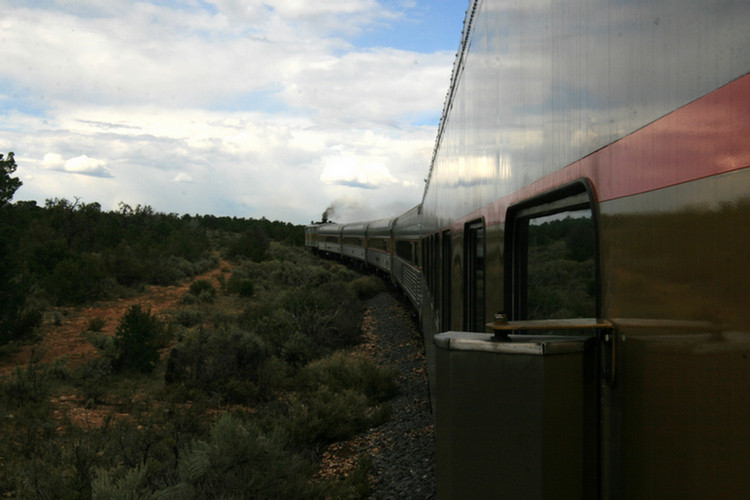

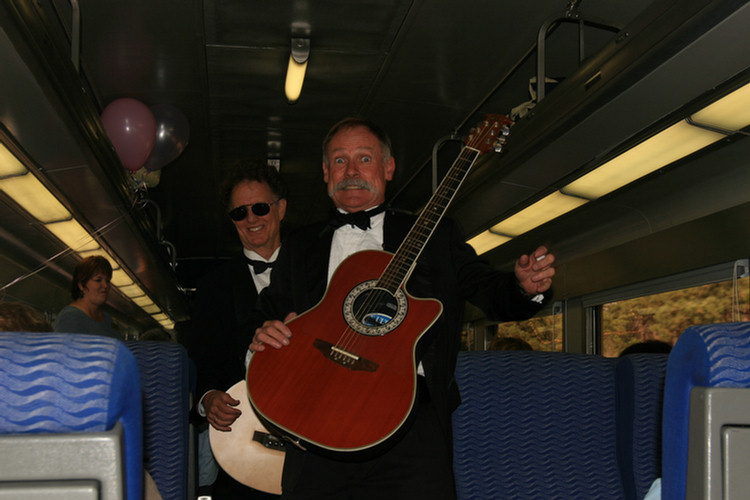
The trio entertained all over the train

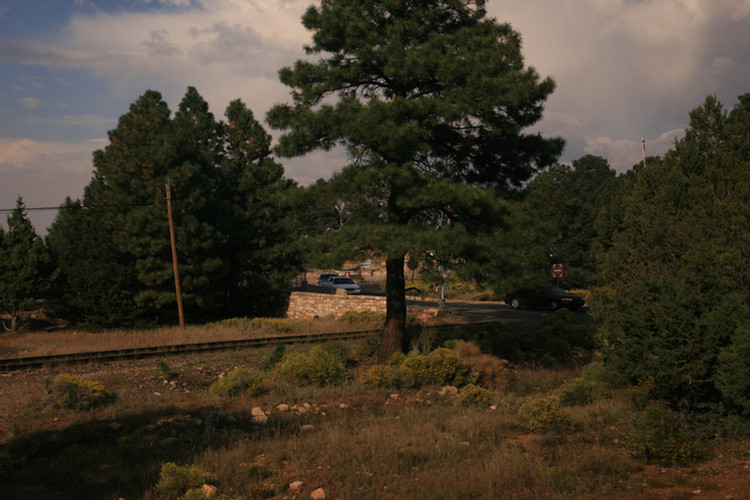
South Rim Of The Grand Canyon

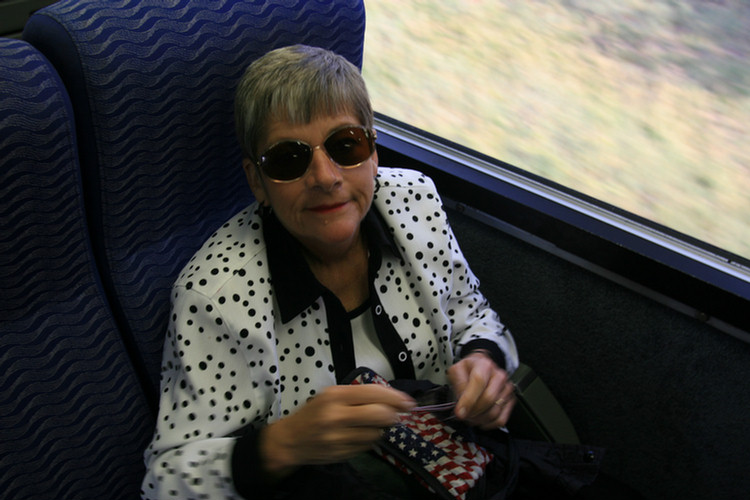
She is ready to get up and see the canyon

Grand Canyon Train Depot
 Grand
Canyon Depot, also known as Grand Canyon Railroad Station, was constructed
in 1909-10 for the Atchison, Topeka and Santa Fe Railroad.
Grand
Canyon Depot, also known as Grand Canyon Railroad Station, was constructed
in 1909-10 for the Atchison, Topeka and Santa Fe Railroad.
It is the last remaining railroad depot in the country built of logs. It was declared a National Historic Landmark in 1987..
It has been restored and is very busy handling traffic between Williams and the Grand Canyon.
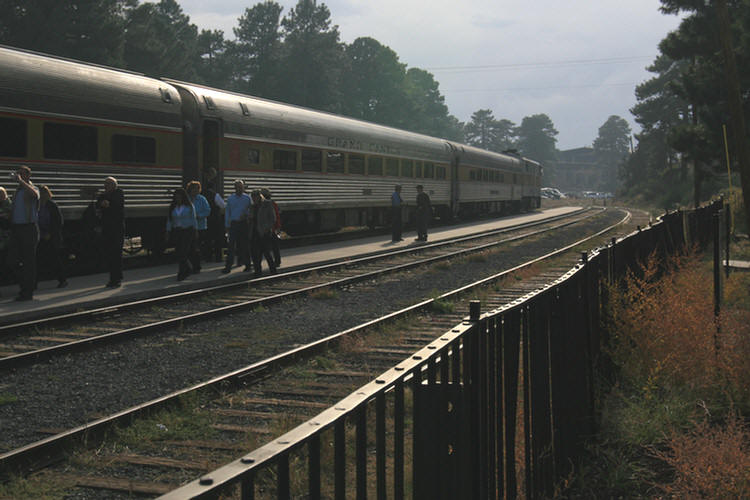
It was dry at the canyon!

El Tovar Hotel
Did You Know? - The El Tovar Hotel, also known simply as El Tovar, is a former Harvey House situated just 20 ft (6 m) from the south rim of the Grand Canyon in Arizona. The hotel was designed by Charles Whittlesey, Chief Architect for the Atchison, Topeka, and Santa Fe Railway, and was decorated by architect Mary Colter, opened in 1905 as one the chain of hotels and restaurants owned and operated by the Fred Harvey Company in conjunction with the Atchison, Topeka and Santa Fe Railway (Santa Fe). It is at the northern terminus of the Grand Canyon Railway, which was formerly a branch of the Santa Fe. The hotel is one of only a handful of Harvey House facilities that are still in operation, and is an example of National Park Service Rustic architecture. A replica of the hotel, known as The Grand Canyon Railway Hotel, exists at the Williams Depot.
